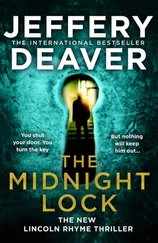BlackBridge’s schemes became personal for Ashton Shaw when a friend and former student of his — then a San Francisco city councilman — began looking into the UIP operation. Todd Zaleski and his wife were found murdered, a close-range gunshot for each of them. It appeared to be a robbery gone bad, but Ashton knew better.
He and his colleagues looked for evidence against the company, hoping to build a case for authorities. Nearly all BlackBridge workers refused to talk to them but he managed to learn of an employee who felt the UIP had crossed a line. A researcher for BlackBridge, Amos Gahl, found some evidence and smuggled it out of the company. The man hid what he’d stolen somewhere in the San Francisco area. But before he could contact Ashton or the authorities, he too was dead — the victim of a suspicious car crash.
Ashton had written in his letter: It became my obsession to find what Gahl had hidden.
Then BlackBridge learned of Ashton and those who shared his obsession. Several died in mysterious accidents, and the others dropped out of the mission, fearful for their lives. Soon, Ashton was alone in his quest to bring down the company that had killed his student and so many others in the City by the Bay — and, likely, untold other cities.
Then on a cold October night, Colter Shaw, sixteen years old, discovered his father’s body in desolate Echo Ridge.
Since then, he’d become well aware of the shady figures he was up against:
Ian Helms, founder and CEO of BlackBridge. Now in his mid-fifties and movie-star handsome, he had had some national defense or intelligence jobs in the past and had worked in politics and lobbying.
Ebbitt Droon, a “facilitator” for the company, which is to say a hitman, was wiry with rat-like features. After several personal run-ins with the man, including one that featured a Molotov cocktail hurled in Shaw’s direction, he was sure that Droon was a certifiable sadist.
Irena Braxton, BlackBridge operative in charge of stopping Ashton — and now stopping his son. Of her Ashton had written:
She may look like somebody’s grandmother but oh, my, no. She’s the picture of ruthlessness and will do what needs to be done.
She was an external relations supervisor, a euphemistic job description if ever there was one.
Ashton had concluded his letter with this:
Now, we get around to you.
You’ve clearly followed the breadcrumbs I’ve left leading you to Echo Ridge and now know the whole story.
I can hardly in good conscience ask you to take on this perilous job. No reasonable person would. But if you are so inclined, I will say that in picking up where my search has ended, you’ll be fighting to secure justice for those who have perished or had their lives upended by BlackBridge and its clients, and you’ll be guaranteeing that thousands in the future will not suffer similar fates.
The map included here indicates the locations in the city that might contain — or lead to — the evidence Gahl hid. After leaving this letter and accompanying documents, I will be returning to San Francisco and I hope I will have found more leads. They can be found at 618 Alvarez Street in San Francisco.
Finally, let me say this:
Never assume you’re safe.
A.S.
This was Colter Shaw’s mission. To check out each of the locations on his father’s map — there were eighteen of them — and find the evidence Amos Gahl had hidden.
As he now looked over the documents in the secret room of the safe house’s basement, he realized they had nothing to do with BlackBridge. They had to do with engineering projects and shipping. Some in English, some in Russian or perhaps another language using Cyrillic characters. Other printouts were in Spanish, a language that he could speak, and they related to shipping and transportation too. There were a number in Chinese as well.
Someone was using the secret room as a base of operations. One of the original members of his father’s circle? Or, like Shaw, second generation? A man or a woman? Young? Middle-aged? Some of these materials were dated recently. He turned to the duffel bag on the floor and — after an examination for a tripwire — unzipped it.
Inside was the answer to the question of gender. The clothing was a man’s, of larger-than-average physique. T-shirts, work shirts, cargo pants, jeans, sweaters, wool socks, baseball caps, gloves, casual jackets. Everything was black, charcoal gray or dark green.
Then he saw in the shadows against the back wall another stack of papers. Ah, here was his father’s material. It was Ashton from whom Shaw had learned the art of calligraphy, and the man wrote in a script even more elegant — and smaller — than Shaw’s.
His heart beat just a bit faster, seeing these.
Shaw carried the stack upstairs and set the papers on the rickety kitchen table. He sat down in an equally uncertain chair and began to read. There were more details about the UIP, and references to other schemes the company engaged in: dodgy earthquake inspections of high-rises (some located on the San Andreas Fault, no less), government contract kickbacks, land-use and zoning ploys, stock market manipulations, money laundering.
There was a clipping about the death of a California state assemblyman, with two question marks beside the victim’s picture. The man had died in a car crash on the way to meet with a state attorney general. The resulting fire had destroyed his auto and boxes of records he had with him. The crash was curious but no criminal investigation was begun.
He found as well articles about Todd Zaleski, his father’s former student turned city councilman whom Ashton believed was murdered by BlackBridge.
Everything he found hinted at the company’s guilt. But this wasn’t evidence — at least not enough for a prosecutor. Shaw had some experience on the topic of criminal law. After college he’d worked in a law firm, while deciding whether to take the LSATs and apply to law school. He’d been particularly inspired to study the subject by one Professor Sharphorn at the University of Michigan and thought he might take up the profession. In the end, his restless nature put the kibosh on a desk job, but an interest in the law stayed with him and he often read up on the subject; it was also helpful in his reward-seeking job.
No, nothing his father had found would interest the D.A.’s office.
Shaw then found a note, presumably from a colleague of Amos Gahl, intended for Ashton. It was a small sheet of paper folded many times. This no doubt meant it would have been left in a dead-drop, a spy technique of hiding communiqués under park benches or cracks in walls, avoiding the risk of electronic intercepts.
Amos is dead. It’s in a BlackBridge courier bag. Don’t know where he hid it. This is my last note. Too dangerous. Good luck.
So “it” — the evidence — was in a company bag hidden in one of the eighteen locations Ashton had identified as a likely spot. An arduous task, but there was no way around it. He’d have to start with the first and keep going until he found the courier bag — or give up after none of them panned out.
But he soon learned he wouldn’t have to investigate eighteen locations. In fact, he didn’t need to check out any.
He discovered in the stack a map identical to the one he’d found in Echo Ridge — well, identical except for one difference. All eighteen of the locations were crossed off with bold red X s.
After leaving the map at the Compound, Ashton, as he’d written, had returned here and searched the sites himself, eliminating them all.
Shaw sighed. This meant that the evidence that would destroy BlackBridge could be squirreled away anywhere within the entire San Francisco Bay Area, which had to embrace thousands of square miles.
Читать дальше
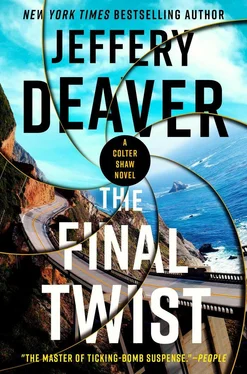
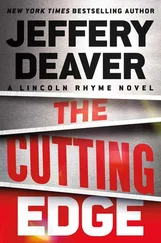



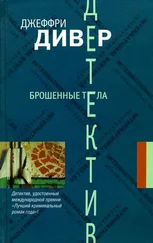


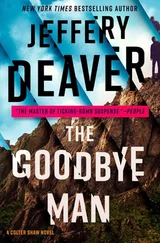
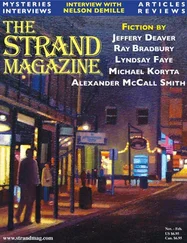
![Джеффри Дивер - Where the Evidence Lies [A Lincoln Rhyme Short Story]](/books/403782/dzheffri-diver-where-the-evidence-lies-a-lincoln-r-thumb.webp)

